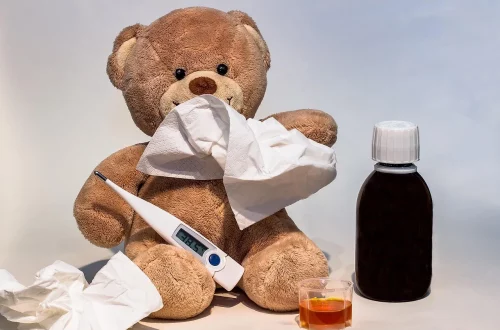
Understanding Scrotal Pearls: Causes, Symptoms, and Treatments
Understanding Scrotal Pearls: Causes, Symptoms, and Treatments
Scrotal pearls, also known as scrotal calculi, are small, hard lumps that can form in the scrotum. They are often mistaken for other conditions, leading to confusion and concern among those who discover them. While the phenomenon is not widely discussed, understanding scrotal pearls is important for men’s health. These formations are typically benign and can be a natural occurrence, but they can also raise questions about hygiene and overall reproductive health.
The scrotum, which houses the testicles, is a sensitive area of the male anatomy. It is not uncommon for men to experience various conditions affecting this region, but scrotal pearls are less known compared to other issues such as varicoceles or hydroceles. The formation of these small, pearl-like structures may stem from several factors, including the accumulation of smegma, a natural substance created by the body, or other benign causes. Recognizing the symptoms associated with scrotal pearls is crucial for differentiating them from more serious health concerns.
Men experiencing unusual sensations or discomfort in the scrotal area should seek medical advice to ensure proper evaluation and peace of mind. This article delves into the causes, symptoms, and potential treatments for scrotal pearls, providing a comprehensive understanding of this often-overlooked topic.
What Are Scrotal Pearls?
Scrotal pearls are small, calcified structures that can develop in the scrotal tissue. These formations are generally harmless and are composed of keratin, which is a protein found in skin and hair. While they can vary in size, most scrotal pearls are relatively small and are not typically associated with any significant pain or discomfort.
The genesis of scrotal pearls can often be linked to the accumulation of smegma, a substance that is produced by the sebaceous glands in the skin. Smegma serves as a natural lubricant and can build up in the genital area if proper hygiene is not maintained. When smegma is left to accumulate, it can harden and form small lumps, which may eventually turn into scrotal pearls.
In addition to smegma, scrotal pearls can form due to other factors such as skin irritation, inflammation, or even minor injuries to the scrotum. Conditions like folliculitis, where hair follicles become inflamed, may also contribute to the formation of these pearls. It is essential for men to practice good hygiene and regularly clean the genital area to prevent the buildup of smegma and reduce the risk of developing scrotal pearls.
While scrotal pearls are generally benign, it is crucial to differentiate them from other conditions that may present similar symptoms. Regular self-examinations and awareness of changes in the scrotal area can help men identify any concerning symptoms early on.
Symptoms and Diagnosis
Scrotal pearls usually manifest as small, firm lumps within the scrotum. They may not cause any noticeable symptoms, which is why many individuals may not even realize they have them until they perform a self-examination. However, in some cases, scrotal pearls can cause discomfort, especially if they become inflamed or if there is significant irritation in the area.
Men should be aware of the signs that may accompany scrotal pearls, such as swelling or tenderness in the scrotum. If a lump appears suddenly or is accompanied by pain, it may indicate a more serious condition that requires medical attention. Other symptoms that may warrant a visit to a healthcare provider include changes in the color or texture of the skin on the scrotum, discharge, or any unusual odors.
Diagnosis of scrotal pearls is primarily through physical examination. A healthcare professional will assess the lumps and may inquire about the patient’s medical history and any associated symptoms. In some cases, imaging studies such as ultrasounds may be conducted to rule out other conditions like tumors or cysts.
It is essential to avoid self-diagnosing or dismissing any unusual changes in the scrotal area. While scrotal pearls are generally harmless, other conditions could lead to serious complications if not addressed. Therefore, maintaining open communication with a healthcare provider is crucial for any concerns regarding scrotal health.
Treatment Options and Recommendations
In most cases, scrotal pearls do not require treatment, especially if they are asymptomatic and do not cause discomfort. However, individuals with concerns about the appearance or potential irritation caused by scrotal pearls may consider treatment options.
One common approach is to maintain good hygiene practices. Regular washing of the genital area with mild soap and water can help prevent the buildup of smegma and minimize the risk of developing scrotal pearls. Additionally, trimming pubic hair may also reduce irritation and allow for better hygiene.
If scrotal pearls become painful or bothersome, a healthcare provider may recommend removal. This procedure is typically straightforward and can often be performed in an outpatient setting. It is crucial, however, to consult with a qualified healthcare professional before attempting any form of removal at home, as improper techniques can lead to infection or other complications.
In cases where scrotal pearls are associated with underlying conditions, such as infections or skin disorders, treating the primary cause may alleviate the symptoms. For example, if inflammation or infection is present, appropriate medical interventions such as antibiotics or anti-inflammatory medications may be prescribed.
Ultimately, the best course of action for individuals dealing with scrotal pearls is to maintain regular check-ups with a healthcare provider. This ensures ongoing evaluation of any changes in the scrotal area and allows for timely intervention if necessary.
Preventive Measures and Lifestyle Considerations
Preventing scrotal pearls primarily revolves around maintaining good hygiene and being proactive about scrotal health. Men can take several steps to minimize the likelihood of developing scrotal pearls and other related conditions.
First and foremost, practicing regular and thorough cleaning of the genital area is crucial. This includes washing the scrotum daily with mild soap and water to remove any accumulated smegma. Additionally, ensuring the area is adequately dried after washing can help prevent moisture buildup, which can lead to irritation and other skin issues.
Wearing breathable underwear made from natural fibers, such as cotton, can also promote better airflow and reduce moisture accumulation. Avoiding tight-fitting clothing can help prevent friction and irritation in the scrotal area.
Furthermore, men should be vigilant about any changes in their scrotal health and perform regular self-examinations. Being aware of what is normal for one’s body can help in identifying any concerning changes early on.
Incorporating a healthy lifestyle, including a balanced diet, regular exercise, and avoiding smoking and excessive alcohol consumption, can positively influence overall health and well-being. These habits contribute to a robust immune system and may help the body fight off infections that could lead to scrotal issues.
If you have any concerns or questions regarding scrotal pearls or your reproductive health, it is always best to consult with a qualified healthcare provider. They can provide personalized advice and recommendations tailored to your specific situation.
**Disclaimer:** This article is not intended to provide medical advice. For any health-related concerns, please consult a healthcare professional.




